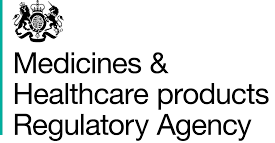
Manufactured and distributed from our facility in Utah, Health Line’s power PICC lines are designed with both function and patient comfort in mind. Our standard PICC line kits come in a variety of configurations to provide nurses, doctors, radiologists, and other healthcare professionals the tools they need to safely administer intravenous therapies and deliver exceptional care to patients of all ages.
A peripherally inserted central catheter, or a PICC, are catheters placed peripherally with the tip of the catheter located in the lower 1/3 of the superior vena cava (SVC). PICCs can remain in situ for extended periods of time (30 days or more) to administer medicine that cannot enter the body in a peripheral vein.
They are used in both the hospital and community settings. PICCs can be used for intravenous delivery of total parenteral nutrition (TPN), chemotherapy, antibiotics or other medications, and can also be used for blood sampling if the lumen is 4 French or larger in size.
PICC lines are placed by a variety of people in the healthcare industry. Radiologists, doctors, nurses, PICC teams, and traveling PICC teams all place PICC lines in a variety of insertion methods.
Our PICCs have power injectability, meaning they allow for the injection of contrast media at rates of up to 5ml/sec for CECT scans.
Yes, our SYNERGY CT PICC™ lines are indicated for central vein pressure monitoring.
PICCs are most commonly placed using the Modified Seldinger technique (MST) and our kits are designed for MST placement.
A peripherally inserted central catheter can stay in a patient’s body 30 days or longer.
Yes, our Bantam™ 1.9Fr PICC line kit is designed for neonatal patients.
Yes, a healthcare provider can use a PICC to draw blood. This may be preferred if the patient needs blood drawn often.
We recommend choosing the smallest gauge and length with the fewest number of lumens to accommodate and manage the patient’s prescribed therapy. Please refer to your institutional guidelines.
The difference between our SYNERGY CT PICC™ Line and CT Midline is the length in cannula and the intended tip location.
The CT PICC line tip resides in the lower third of the superior vena cava (SVC), whereas the CT Midline tip resides at the level of the axilla and distal to the shoulder. Because blood flow in these two areas differ, the prescribed treatment should always be taken into consideration when selecting a device for your patient.
Health Line International Corp. is not responsible for any errors, omissions, injury, loss, or damage arising from or relating to the use (or misuse) of any information, statements, or conclusions contained in or implied by the contents of this document or any of the source materials.
Health Line International Corp. is not responsible for any errors, omissions, injury, loss, or damage arising from or relating to the use (or misuse) of any information, statements, or conclusions contained in or implied by the contents of this document or any of the source materials.
Thank you for visiting our website, and please feel free to get in touch with us at info(at rate)headingtonmedical.co.uk to learn more about how we can collaborate and make a positive impact on the healthcare industry together.



Thank you for visiting our website, and please feel free to get in touch with us at info@headingtonmedical.co.uk to learn more about how we can collaborate and make a positive impact on the healthcare industry together.